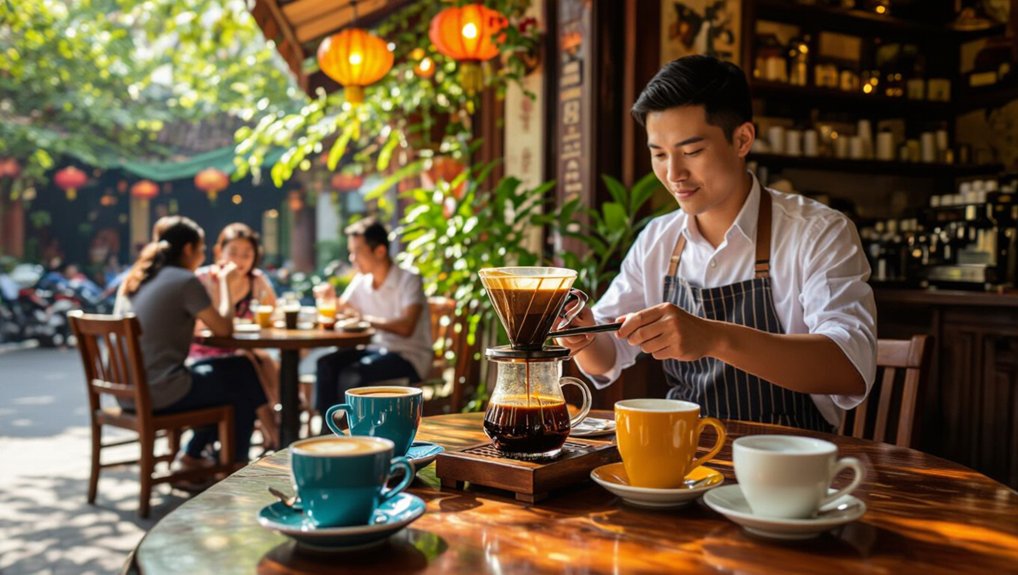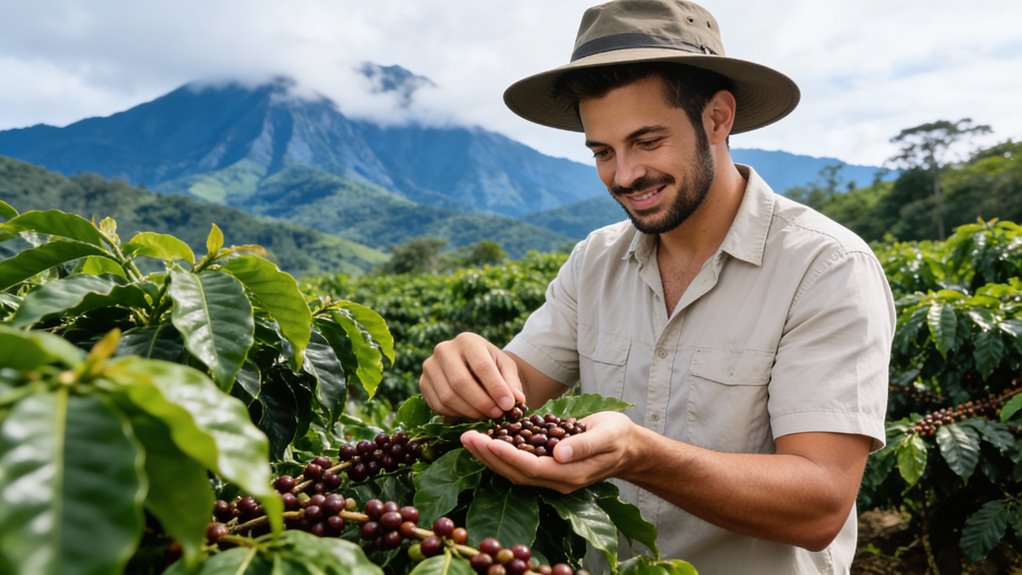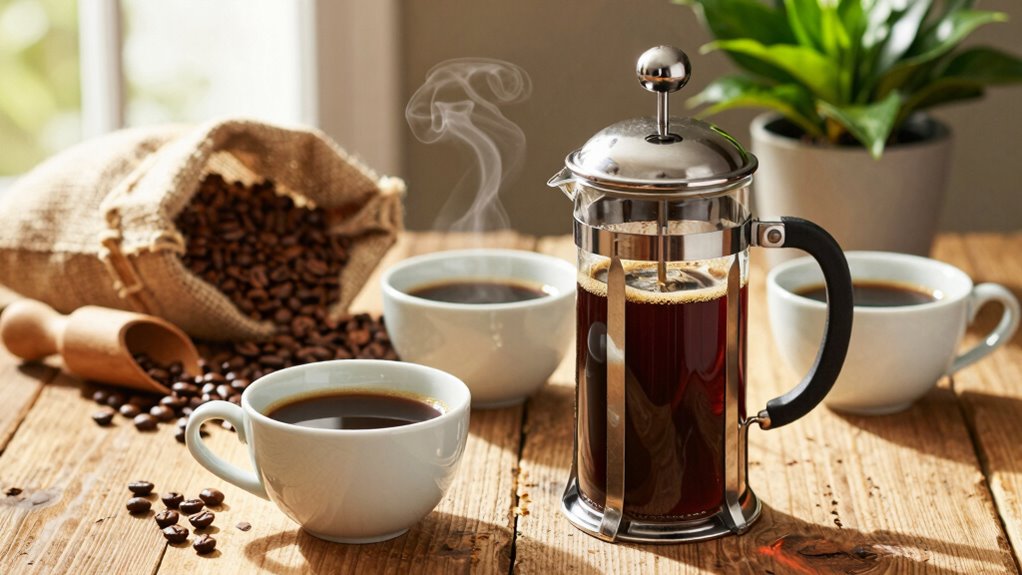Ever wondered what makes Vietnamese coffee so distinctive from your regular morning brew? Many coffee enthusiasts struggle to understand why Vietnamese coffee tastes so different and how to recreate that authentic experience at home. The answer lies in Vietnam’s unique coffee culture, which combines specific bean varieties, traditional brewing methods, and time-honored preparation techniques.
Vietnamese coffee isn’t just about caffeine—it’s a cultural ritual that has evolved over generations. The country’s preference for robusta beans, combined with the iconic phin filter brewing system, creates a bold, concentrated coffee experience that’s unlike anything you’ll find elsewhere.
In this guide, you’ll discover the fascinating history behind Vietnamese coffee culture, learn about traditional brewing methods like the phin filter, and explore popular drinks such as cà phê sữa đá (iced coffee with condensed milk) and egg coffee. Whether you’re looking to understand the cultural significance or master the brewing techniques yourself, this comprehensive overview will give you everything you need to appreciate Vietnam’s remarkable coffee tradition.
Table of Contents
The Historical Roots of Vietnamese Coffee
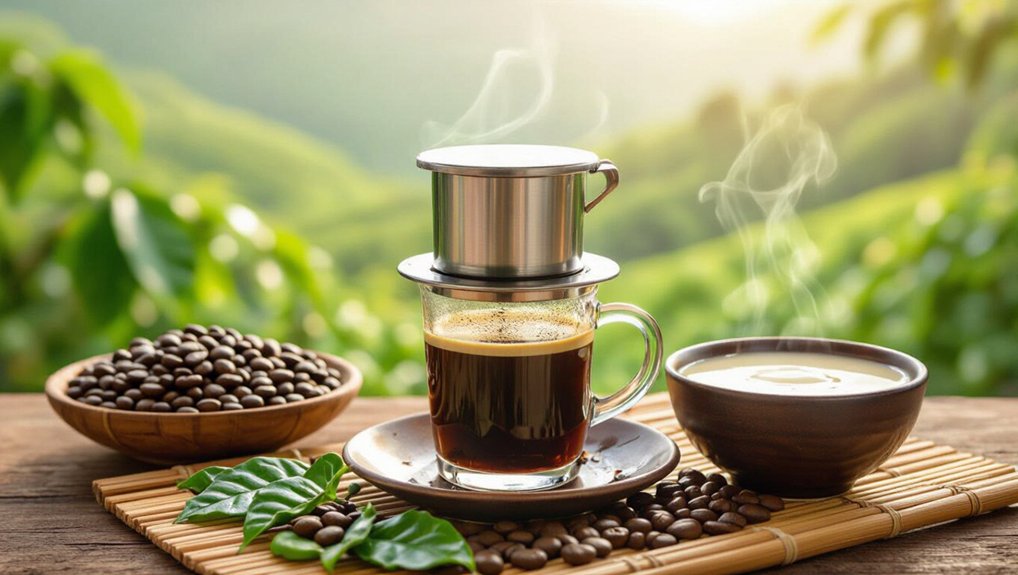
Although coffee might seem like a global commodity today, its journey in Vietnam is a fascinating tale of cultural transformation.
French colonizers introduced coffee in the mid-19th century, forever changing Vietnamese culinary traditions. They brought not just beans, but a unique brewing method called phin—a French drip filter that would become iconic in coffee preparation.
Vietnam quickly embraced robusta beans, eventually becoming the world’s second-largest coffee exporter.
The scarcity of fresh milk during colonial times led to the beloved practice of using sweetened condensed milk, creating a distinctively rich and sweet Vietnamese coffee culture that continues to captivate coffee lovers worldwide.
Vietnamese Coffee Beans: Robusta vs. Arabica
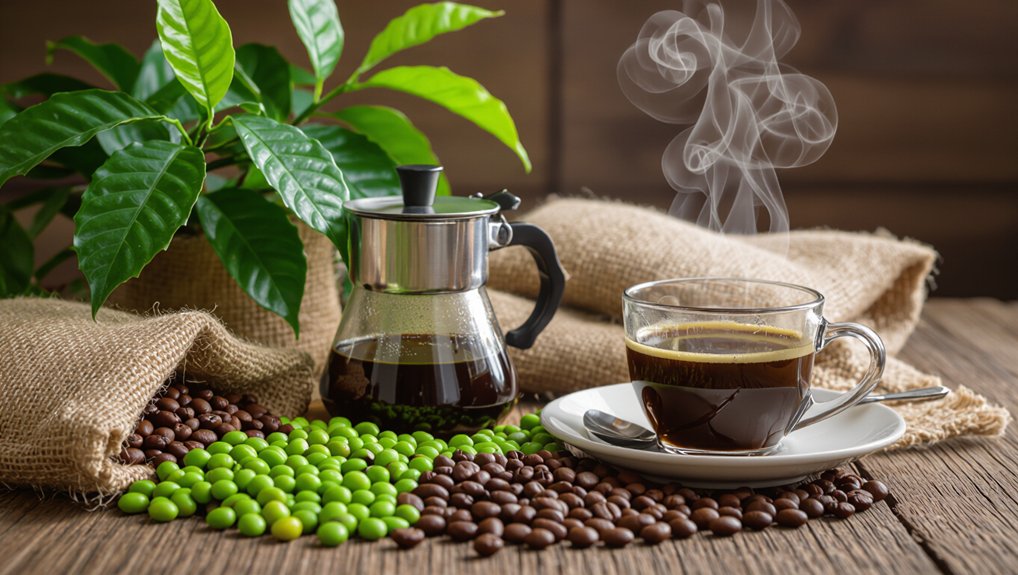
When you dive into the world of Vietnamese coffee, you’ll quickly discover that the battle between Robusta and Arabica beans is more than just a simple comparison—it’s a story of flavor, culture, and terroir.
Robusta beans reign supreme in Vietnam’s Central Highlands, boasting a robust 2.7% caffeine content and delivering earthy, chocolatey flavors. Carefully handpicked from ripe coffee cherries, these beans define traditional Vietnamese coffee preparations.
In contrast, Arabica beans offer a smoother profile, growing primarily in northern regions and favored for their nuanced taste.
Each bean tells a unique story of Vietnam’s rich coffee heritage.
Traditional Brewing Methods and Equipment
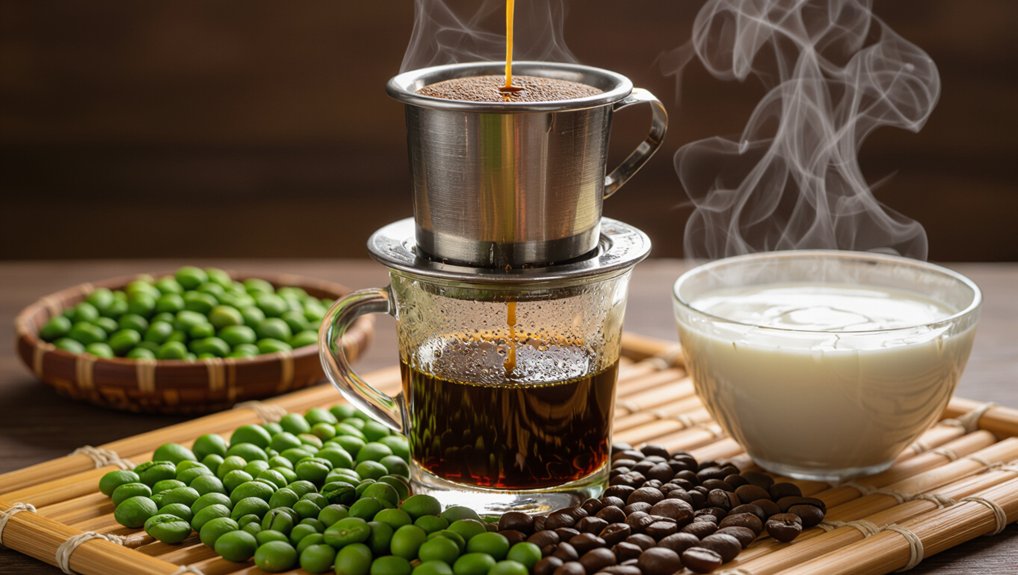
The rhythmic drip of a phin filter tells a story of Vietnamese coffee craftsmanship that’s been perfected over generations.
This traditional brewing method creates a unique coffee experience through:
- Slow extraction using a small metal drip filter
- Placing coffee grounds directly over sweetened condensed milk
- Allowing hot water to methodically create a rich, intense flavor
- Serving the coffee either iced (cà phê sữa đá) or hot (cà phê nóng)
The phin isn’t just equipment—it’s a cultural artifact that transforms simple ingredients into a complex, bold Vietnamese coffee experience.
You’ll taste French colonial influence in every carefully brewed drop, making each cup a journey through flavor and tradition.
Classic Vietnamese Coffee Styles
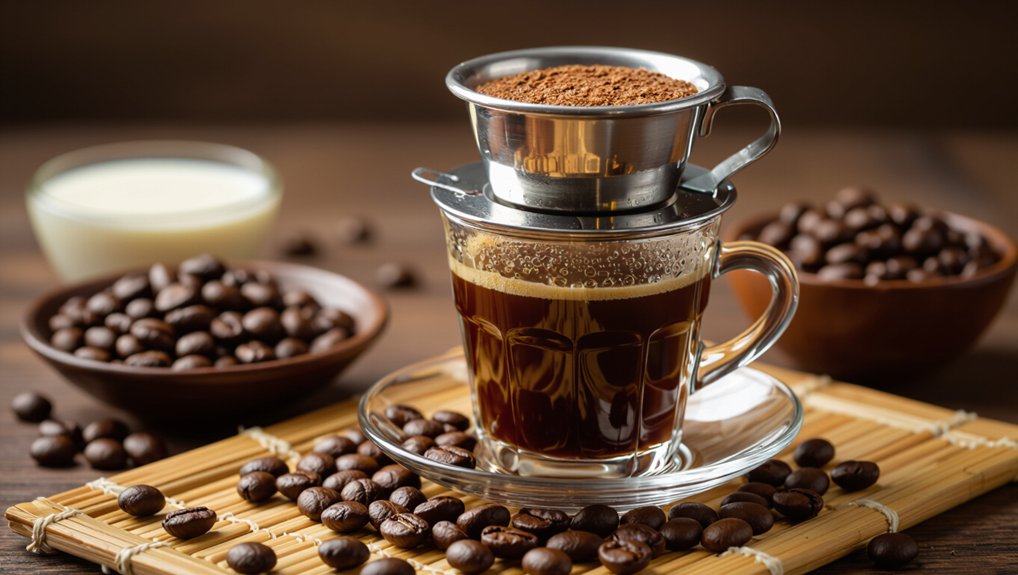
From the rhythmic drip of the phin filter to the final sip, Vietnamese coffee styles represent a rich tapestry of flavors that’ll captivate any coffee enthusiast.
Ca phe sua da, featuring robusta beans and sweetened condensed milk, stands as the iconic iced coffee that defines Vietnamese coffee shops.
You’ll discover unique variations like Bac Xiu, with its milky smooth profile, and ca phe trung, a creamy egg coffee born in the 1940s.
Each brewing method through the traditional drip filter creates thick, intense coffee blends that showcase Vietnam’s extraordinary coffee culture.
Unique Coffee Variations and Innovations
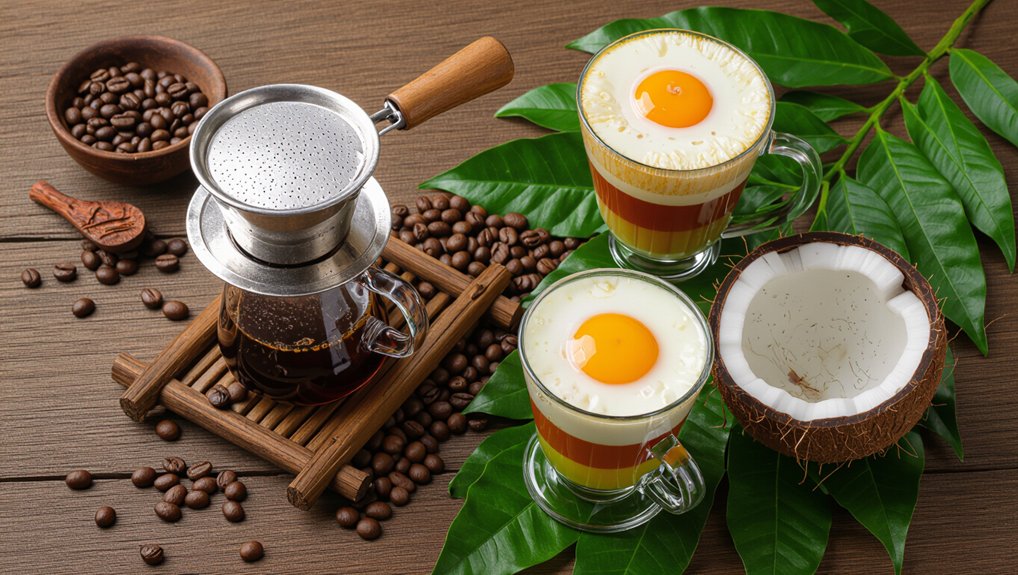
While Vietnamese coffee culture continues to evolve, innovative variations have emerged that push traditional brewing boundaries, transforming classic recipes into exciting new experiences.
Dive into these unique local coffee creations:
- Salt Coffee (Cà Phê Muối) balances robusta coffee with a salty twist, enhancing sweet and bitter notes.
- Egg Coffee (Cà Phê Trứng) delivers a creamy, rich experience with whipped egg yolks and honey.
- Coconut Coffee (Cà Phê Dừa) offers a tropical blend mixing strong coffee with coconut milk.
- Fruity Cold Brew introduces refreshing fruit-infused Arabica for those with a sweet tooth.
These inventive drinks showcase Vietnam’s dynamic and creative coffee culture.
Coffee Culture and Social Significance
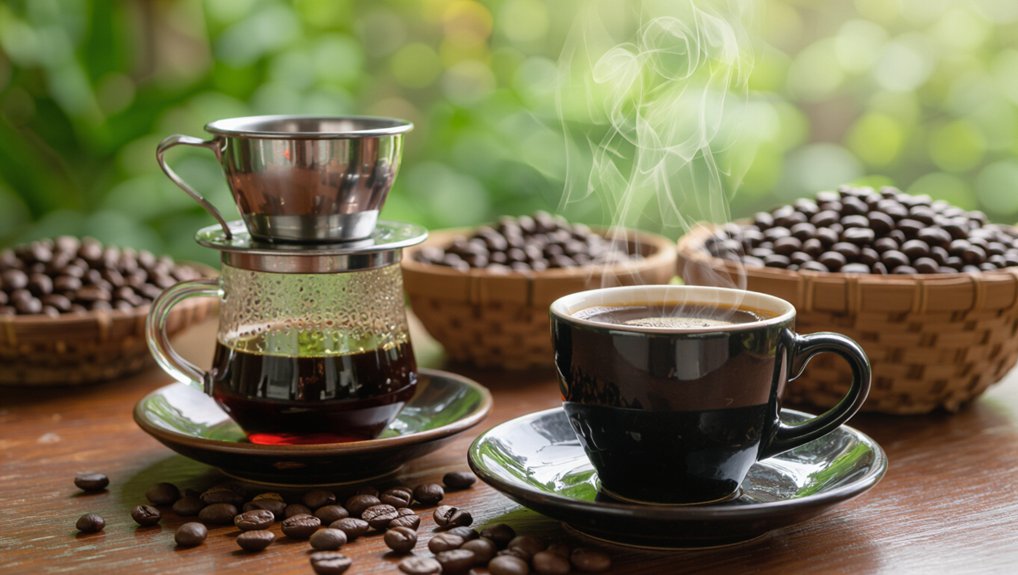
When stepping into the vibrant world of Vietnamese coffee culture, you’ll quickly discover that it’s far more than just a beverage—it’s a profound social experience that weaves connection, conversation, and community into every sip.
Traditional cafes and street vendors become social hubs where locals gather, sharing gossip (ba tam) while brewing coffee meticulously with a phin filter. This communal experience transforms coffee drinking from a simple ritual into a deeply meaningful interaction, reflecting the warmth of local culture.
Coffee shops aren’t just places to drink—they’re spaces where stories unfold, relationships deepen, and the unique Vietnamese coffee experience comes alive.
Where to Experience Authentic Vietnamese Coffee
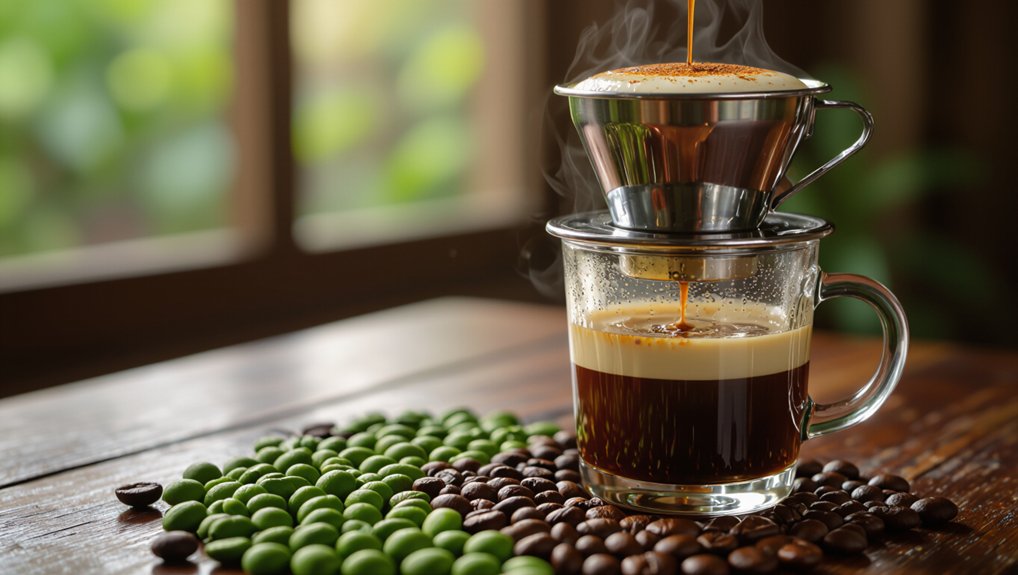
Ever wondered where to dive deep into Vietnam’s rich coffee culture? Let me guide you through some must-visit spots for an authentic Vietnamese coffee experience:
- Giang Cafe in Hanoi: Try the legendary Egg Coffee (Cà Phê Trứng), a local indulgent beverage that’s been a staple since the 1940s.
- Ho Chi Minh City’s street stalls: Explore the local scene and savor Iced Milk Coffee (Cà Phê Sữa Đá) while soaking in the vibrant coffee culture.
- Backstage in Capella Hanoi: Sample Bac Xiu, a unique milky coffee blend that balances sweetness and bitterness.
- Fashionista Cafe: Discover innovative phe drinks like Salt Coffee and Coconut Coffee, showcasing Vietnam’s diverse coffee traditions.
Frequently Asked Questions
What Is the Coffee Culture in Vietnam?
I’ll share Vietnam’s vibrant coffee culture: we start early, gather socially, and love our strong robusta brews. From street vendors to cafes, coffee isn’t just a drink—it’s a daily ritual that connects friends, family, and communities.
What Kind of Coffee Is Popular in Vietnam?
I’ll tell you about Vietnam’s popular coffee: Cà Phê Sữa Đá is the top choice, a strong iced milk coffee with robusta beans and sweetened condensed milk that’s deliciously refreshing and quintessentially Vietnamese.
How to Drink Traditional Vietnamese Coffee?
I recommend using a phin filter to slowly drip coffee over sweetened condensed milk. Stir thoroughly, add ice if you prefer, and enjoy the rich, bold flavor that’s both sweet and strong. It’s a delightful Vietnamese experience!
What Kind of Coffee Do Vietnamese Drink?
I drink robusta coffee, primarily through my beloved phin filter. My favorites are ca phe sua da and egg coffee, which offer a rich, intense flavor that’s uniquely Vietnamese – bold, sweet, and absolutely delicious.
In Conclusion
I’ve fallen in love with Vietnamese coffee, and I bet you will too. Its rich history, unique brewing techniques, and bold flavors create an unparalleled coffee experience. From the robust robusta beans to the iconic phin filter, each sip tells a story of cultural tradition and innovation. Whether you’re enjoying a classic cà phê sữa đá or experimenting with egg coffee, Vietnamese coffee isn’t just a drink—it’s a journey.

